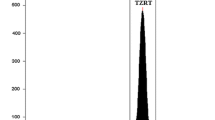Abstract
The main objective of the study was to prepare the microemulsions containing adapalene (MEs-Ap) to enhance epidermal penetration, dermal retention, and local bioavailability compared with the commercial preparation. The optimal formulations were selected by solubility experiments, pseudo-ternary phase diagram, and percutaneous permeation experiments and the physiochemical properties were also investigated. Then, the study of permeability, retention, safety, pharmacodynamics, and pharmacokinetics in the skin for MEs-Ap compared with the commercial preparation were researched. The optimized formulation was developed as follows: the ratio of AP, isopropyl myristate, polyoxyethylene hydrogenated castor oil, ethanol, and water was 0.01:1:1.25:3.75:4 (w/w). The globule size and average viscosity of the optimized MEs-Ap were 99.34 nm and 1.7 mPa·s, respectively, which was oil-in-water microemulsion without serious irritation or allergy for skin. The Js, Qn, and Qretention of MEs-Ap (0.81 ± 0.19 μg/cm2/h, 24.73 ± 4.24 μg/cm2, 2.08 ± 0.18 μg/cm2) were apparently higher than Differin® (0.022 ± 0.009 μg/cm2/h, 0.536 ± 0.103 μg/cm2, and 0.523 ± 0.130 μg/cm2) respectively. The local bioavailability study showed that the AUC0 → 36h of the MEs-Ap in the dermal (19.6 ± 1.22 μg/cm2) was significantly improved comparing to Differin® (13.9 ± 1.73 μg/cm2) (p < 0.01). The pharmacodynamics study showed that the therapeutic effect of MEs-Ap was better than that of Differin® in the acne model of rabbit auricle. These results suggested that the MEs-Ap could be considered as a having higher epidermal penetrability, dermal retention, local bioavailability, efficacy, and safety topical preparations for acne.

Graphical abstract




Similar content being viewed by others
References
Tangjaturonrusamee C, Rattanaumpawan P, Ditre CM. Comparison of pneumatic broadband light plus adapalene gel 0.3% versus adapalene gel 0.3% monotherapy in the treatment of mild to moderate acne. Cutis. 2016;98(1):56–61.
Ramezanli T, Zhang Z, Michniak-Kohn BB. Development and characterization of polymeric nanoparticle-based formulation of adapalene for topical acne therapy. Nanomedicine. 2017;13(1):143–52. https://doi.org/10.1016/j.nano.2016.08.008.
Pereira RL, Leites FI, Paese K, Sponchiado RM, Michalowski CB, Guterres SS, et al. Hydrogel containing adapalene- and dapsone-loaded lipid-core nanocapsules for cutaneous application: development, characterization, in vitro irritation and permeation studies. Drug Dev Ind Pharm. 2016;42(12):2001–8. https://doi.org/10.1080/03639045.2016.1188110.
Trichard L, Delgado-Charro MB, Guy RH, Fattal E, Bochot A. Novel beads made of alpha-cyclodextrin and oil for topical delivery of a lipophilic drug. Pharm Res. 2008;25(2):435–40. https://doi.org/10.1007/s11095-007-9395-0.
Moser K, Kriwet K, Naik A, Kalia YN, Guy RH. Passive skin penetration enhancement and its quantification in vitro. Eur J Pharm Biopharm. 2001;52(2):103–12. https://doi.org/10.1016/s0939-6411(01)00166-7.
Cichewicz A, Pacleb C, Connors A, Hass MA, Lopes LB. Cutaneous delivery of alpha-tocopherol and lipoic acid using microemulsions: influence of composition and charge. J Pharm Pharmacol. 2013;65(6):817–26. https://doi.org/10.1111/jphp.12045.
Lv LZ, Tong CQ, Lv Q, Tang XJ, Li LM, Fang QX, et al. Enhanced absorption of hydroxysafflor yellow A using a self-double-emulsifying drug delivery system: in vitro and in vivo studies. Int J Nanomedicine. 2012;7:4099–107. https://doi.org/10.2147/IJN.S33398.
Theochari I, Goulielmaki M, Danino D, Papadimitriou V, Pintzas A, Xenakis A. Drug nanocarriers for cancer chemotherapy based on microemulsions: the case of Vemurafenib analog PLX4720. Colloids Surf B: Biointerfaces. 2017;154:350–6. https://doi.org/10.1016/j.colsurfb.2017.03.032.
Butani D, Yewale C, Misra A. Amphotericin B topical microemulsion: formulation, characterization and evaluation. Colloids Surf B: Biointerfaces. 2014;116:351–8. https://doi.org/10.1016/j.colsurfb.2014.01.014.
Lopes LB. Overcoming the cutaneous barrier with microemulsions. Pharmaceutics. 2014;6(1):52–77. https://doi.org/10.3390/pharmaceutics6010052.
Wang Z, Mu HJ, Zhang XM, Ma PK, Lian SN, Zhang FP, et al. Lower irritation microemulsion-based rotigotine gel: formulation optimization and in vitro and in vivo studies. Int J Nanomedicine. 2015;10:633–44. https://doi.org/10.2147/IJN.S74079.
Coneac G, Vlaia V, Olariu I, Mut AM, Anghel DF, Ilie C, et al. Development and evaluation of new microemulsion-based hydrogel formulations for topical delivery of fluconazole. AAPS PharmSciTech. 2015;16(4):889–904. https://doi.org/10.1208/s12249-014-0275-8.
Sintov AC. Transdermal delivery of curcumin via microemulsion. Int J Pharm. 2015;481(1–2):97–103. https://doi.org/10.1016/j.ijpharm.2015.02.005.
Bhatia G, Zhou Y, Banga AK. Adapalene microemulsion for transfollicular drug delivery. J Pharm Sci. 2013;102(8):2622–31. https://doi.org/10.1002/jps.23627.
Tuncay S, Ozer O. Investigation of different emulsion systems for dermal delivery of nicotinamide. Pharm Dev Technol. 2013;18(6):1417–23. https://doi.org/10.3109/10837450.2012.734514.
Sharma G, Wilson K, van der Walle CF, Sattar N, Petrie JR, Ravi Kumar MN. Microemulsions for oral delivery of insulin: design, development and evaluation in streptozotocin induced diabetic rats. Eur J Pharm Biopharm. 2010;76(2):159–69. https://doi.org/10.1016/j.ejpb.2010.07.002.
Wang Q, Jiang C, Liu W, Chen J, Lin X, Huang X, et al. A new optical intra-tissue fiber irradiation ALA-PDT in the treatment of acne vulgaris in rabbit model: improved safety and tolerability. An Bras Dermatol. 2017;92(3):350–5. https://doi.org/10.1590/abd1806-4841.20175543.
Lee HS, Kim MR, Park Y, Park HJ, Chang UJ, Kim SY, et al. Fermenting red ginseng enhances its safety and efficacy as a novel skin care anti-aging ingredient: in vitro and animal study. J Med Food. 2012;15(11):1015–23. https://doi.org/10.1089/jmf.2012.2187.
Allec J, Chatelus A, Wagner N. Skin distribution and pharmaceutical aspects of adapalene gel. J Am Acad Dermatol. 1997;36(6 Pt 2):S119–25. https://doi.org/10.1016/s0190-9622(97)70055-0.
Vasanth S, Dubey A, G SR, Lewis SA, Ghate VM, El-Zahaby SA, et al. Development and investigation of vitamin C-enriched adapalene-loaded transfersome gel: a collegial approach for the treatment of acne vulgaris. AAPS PharmSciTech. 2020;21(2):61. https://doi.org/10.1208/s12249-019-1518-5.
Funding
This research was financially supported by Heilongjiang Postdoctoral Fund (NO. LBH-Z18144) and Excellent Young Talents Funding from College of Pharmacy, Harbin Medical University (NO. 2019-YQ-06).
Author information
Authors and Affiliations
Corresponding authors
Ethics declarations
Conflict of Interest
The authors declare no competing interests.
Additional information
Publisher’s Note
Springer Nature remains neutral with regard to jurisdictional claims in published maps and institutional affiliations.
Rights and permissions
About this article
Cite this article
Shao, B., Sun, L., Xu, N. et al. Development and Evaluation of Topical Delivery of Microemulsions Containing Adapalene (MEs-Ap) for Acne. AAPS PharmSciTech 22, 125 (2021). https://doi.org/10.1208/s12249-021-01989-w
Received:
Accepted:
Published:
DOI: https://doi.org/10.1208/s12249-021-01989-w




